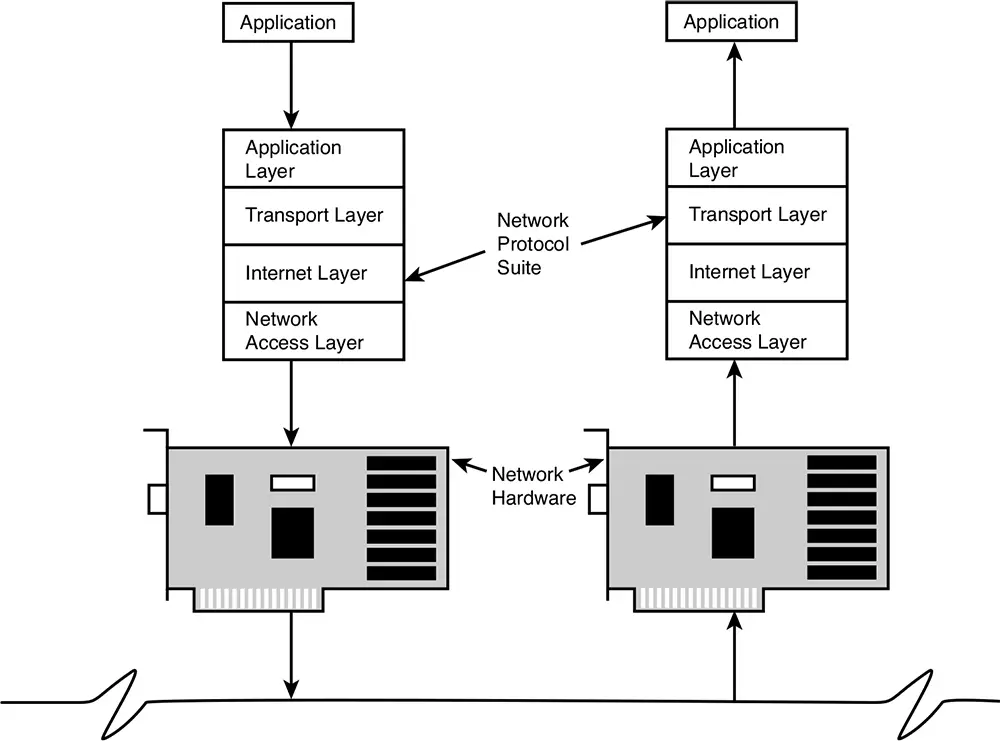Configuring Windows for TCP/IP
- Select Start>Control Panel>Network. Scroll down the list to find TCP/IP. If it is listed, you are ready to enter configuration information. If TCP/IP is not listed, then click the Add button. Do that now.
- The Select Network Component Type dialog box appears. Protocol has been selected for you. Click the Add button to move to the next step.
- The Select Network Protocol dialog box appears. Microsoft has been selected from the Manufacturers list. TCP/IP has been selected from the Network Protocols list on the right. This completes the Simulation.
Communication Proces
A computer interacts with the world through one or more applications that perform specific tasks and manage the communication process. On modern systems, this network communication is so effortless that the user hardly even notices it. For instance, when you surf to a website, your web browser is communicating with the web server specified in the URL. When you view a list of neighboring computers in Windows Explorer or the Mac OS Finder, the computers on your local network are
communicating to announce their presence. In every case, if your computer is part of a network, an application on the computer must be capable of communicating with applications on other network computers.
A network protocol is a system of common rules that helps define the complex process of network communication. Protocols guide the process of sending data from an application on one computer, through the networking components of the operating system, to the network hardware, across the transmission medium, and up through the destination computer’s network hardware and operating system to a receiving application (see Figure 2.5).
A network protocol is a system of common rules that helps define the complex process of network communication. Protocols guide the process of sending data from an application on one computer, through the networking components of the operating system, to the network hardware, across the transmission medium, and up through the destination computer’s network hardware and operating system to a receiving application (see Figure 2.5).

The protocols of TCP/IP define the network communication process and, more importantly, define how a unit of data should look and what information it should contain so that a receiving computer can interpret the message correctly. TCP/IP and its related protocols form a complete system defining how data should be processed, transmitted, and received on a TCP/IP network. A system of related protocols, such
as the TCP/IP protocols, is called a protocol suite. The actual act of formatting and processing TCP/IP transmissions is performed by a software component known as the vendor’s implementation of TCP/IP. For instance, a TCP/IP software component in Microsoft Windows enables Windows computers to process TCP/IP-formatted data and thus to participate in a TCP/IP network.
The TCP/IP driver file, Tcpip.sys, contains both IPv4 and IPv6 Internet layers.
Tcpip.sys operates between Windows Sockets and the Network Device Interface Specification (NDIS) layers in the Windows network architecture. The architecture of Tcpip.sys consists of the following layers:
- Transport layer Contains the implementations of TCP and UDP.
- Network layer Contains implementations of both IPv4 and IPv6.
- Framing layer Contains modules that frame IPv4 or IPv6 packets. Modules exist for IEEE